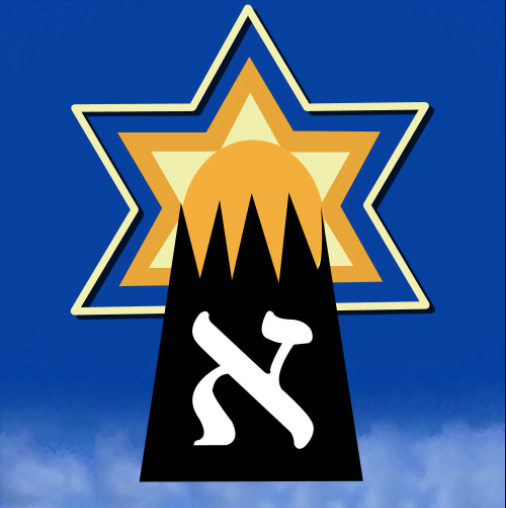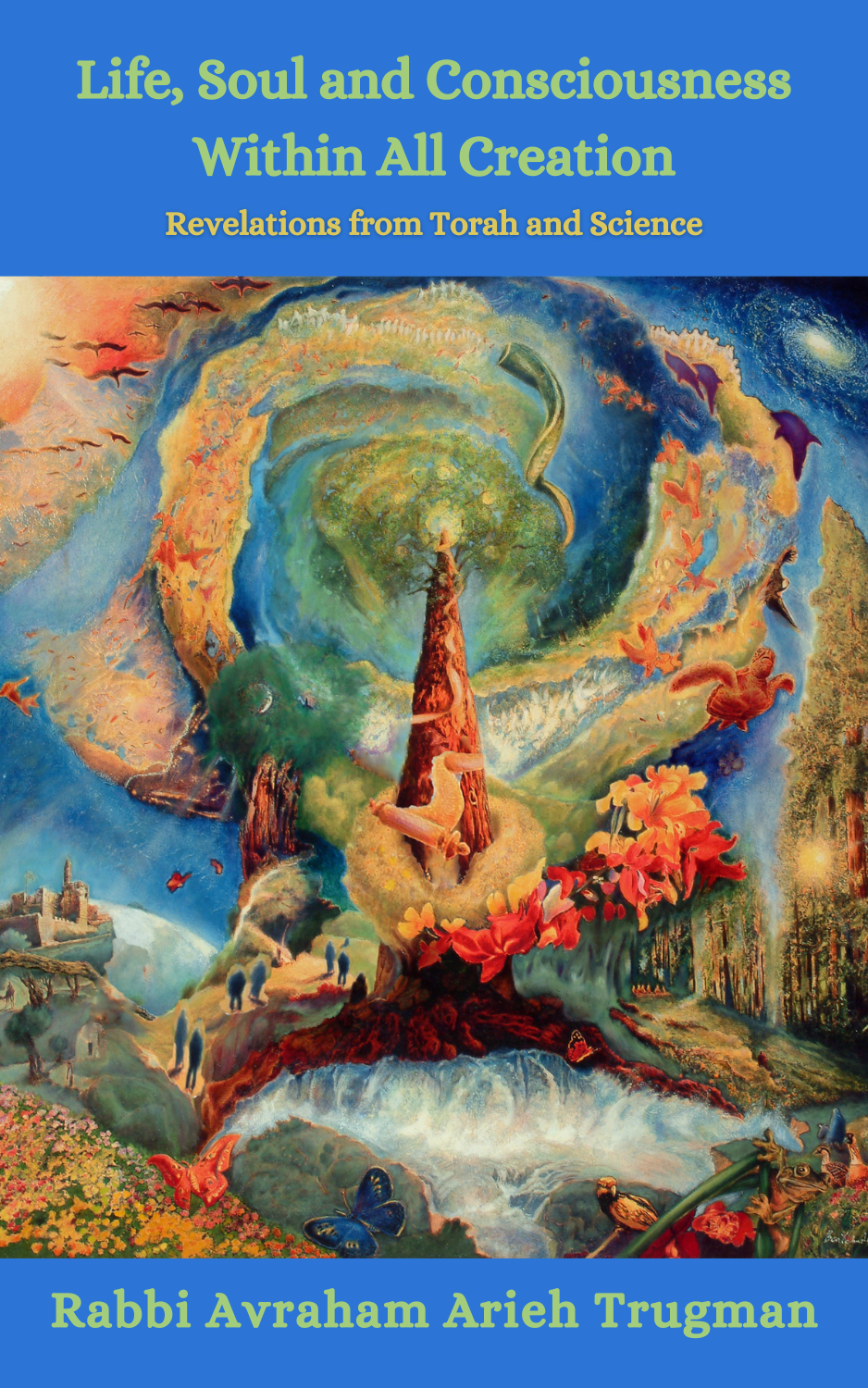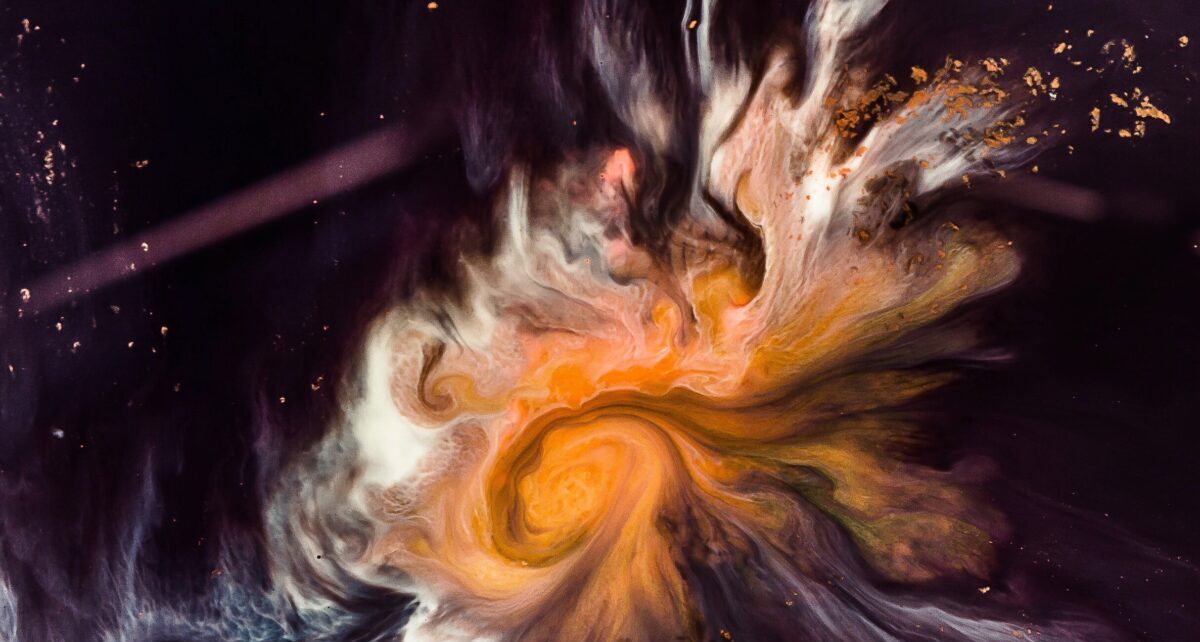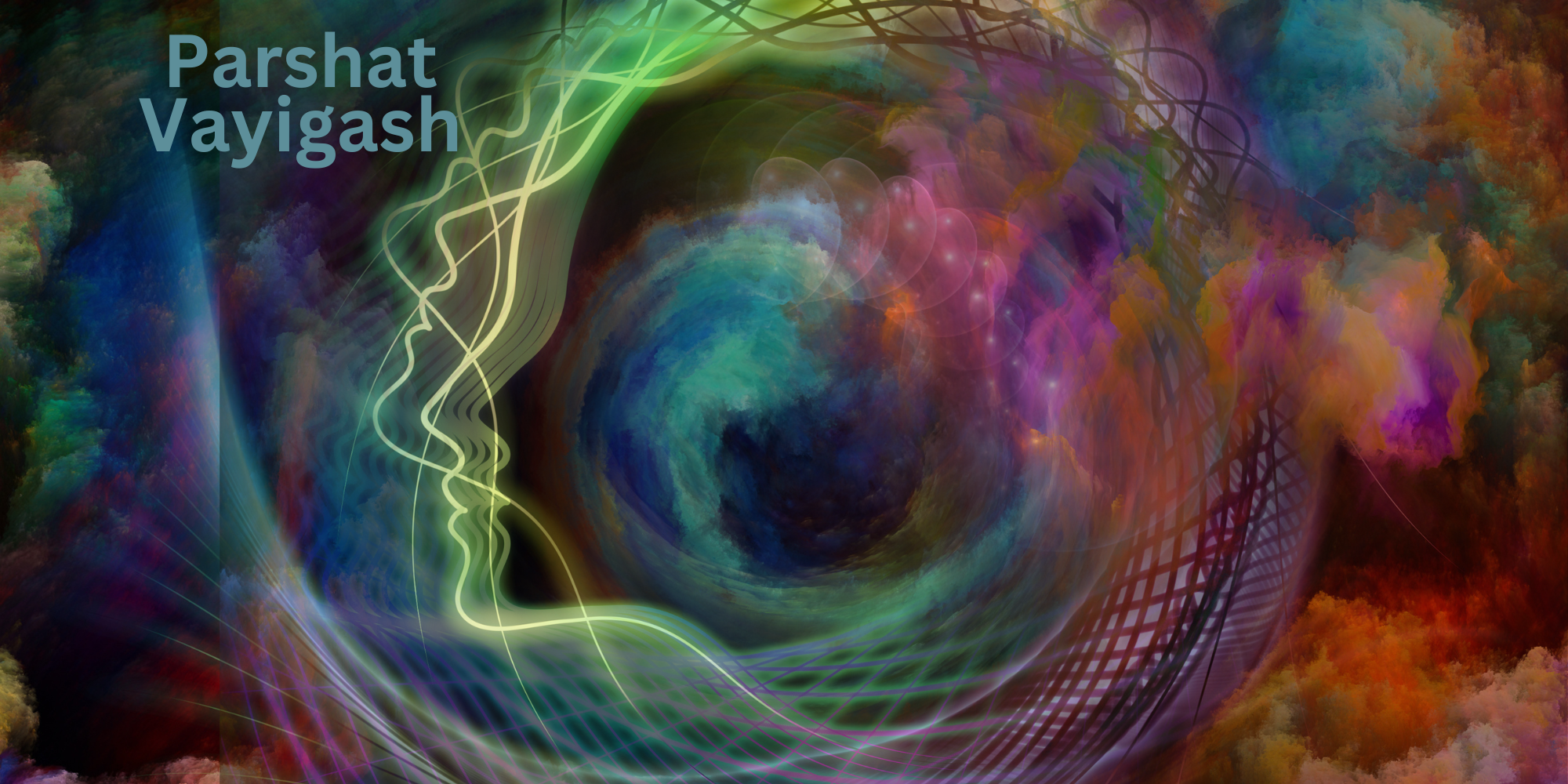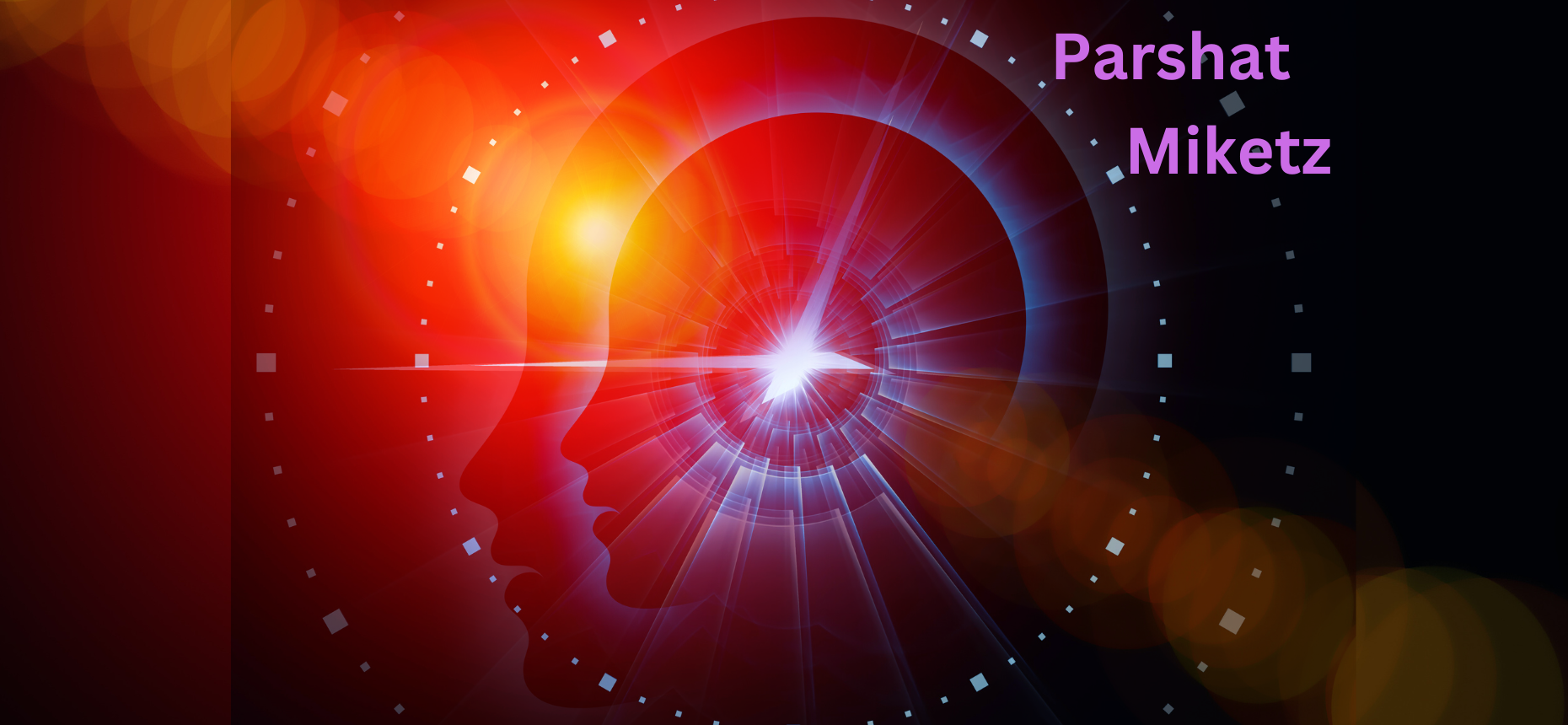The Torah, being a reflection of the infinite will and wisdom of God, likewise contains an infinite number of interpretations. There are many references in our tradition to different systems, levels and “faces” of interpretation, each one valid within its own frame of reference. One can thus perceive a certain theme and see it wind its way through the entire Torah.
One of the themes that appear on many different levels in the Torah is the process of birth, whether of the universe, an individual or the Jewish people. A beautiful allusion to this idea is found when permuting the Hebrew letters of the word Torah (tav, vav, reish, heh), the word V’tahar (vav, tav, heh, reish) is formed, meaning “to become pregnant.”
The creation of the cosmos can be seen in the allegorical context of God giving birth to the world. According to Kabbalah, the prerequisite for creation was the primordial act of tzimtzum, or “contraction,” as discussed in previous chapters. This action is reflected in the physical reality of a woman making place within herself for the seed to enter and the fetus to grow and be nurtured. Before the actual birth, a woman goes through a period of birth pangs and the breaking of the water bag containing the life giving amniotic fluids.
In creation, this corresponds to the primordial “breaking of the vessels,” which occurred when the initial flow of light was too great for the still “immature vessels” of creation. The “breaking of the vessels” ended the world of tohu or “chaos,” thus paving the way for our present state of reality referred to in Kabbalah as olam hatikun, the “world of fixing.” In the birth scenario, the “breaking of the vessels” refer to the birth pangs and the breaking of the water bag, which are necessary stages in the actual birth of the child.
The dynamics of Divine creation mirrored in the intimate act and process of human beings creating new life, connects the soul to its source in God, thus revealing in a very deep way the understanding and realization of man being created “in the image and likeness of God.”
An ancient book of Kabbalah, the Tikunei Zohar, expounds upon the first word in the Torah, (breishit, “in the beginning”) by explaining its different permutations in seventy different ways. This corresponds to the statement of the Sages that there are seventy “faces” to the Torah (Bamidbar Rabbah 13:15). As a crystal with its many faces reflects light differently according to various angles, so too the Torah reveals myriad’s of interpretations and gives birth to new insight according to the ever changing perspective and spiritual level of the individual.
The theme of Torah, creation and birth, as well as the seventy faces of Torah, is connected to the custom of a woman in labor to recite the 20th Psalm, comprised of seventy words. This custom is further associated with the statement that a deer doesn’t give birth till she has cried out seventy times (Zohar 3:249b). These seventy cries relate to the seventy souls of Israel that went down to Egypt during the famine that had overtaken the land of Canaan. The entire story of the exile and subsequent redemption from slavery in Egypt, along with the forty year sojourn in the desert before entering the Promised land, can be seen in a number of different ways as relating to the birth and development of every individual soul in particular, and the nation of Israel in general. In this context, the Torah account of the slavery, deliverance and the forty years in the desert, can be related to directly and personally by every person as an allegory of their own lives and the existential human condition.
“And the children of Israel were fruitful and increased abundantly and multiplied and grew exceedingly great” (Exodus 1:7). The time spent in Egypt, including the slavery, can be seen as a period of pregnancy; the nation of Israel was growing within the “womb” of another nation. “And the children of Israel sighed because of the bondage and they cried out” (Exodus 2:23). The experience of slavery and oppression in Egypt corresponds in creation to the darkness before the light. Israel crying out to God due to their pain is compared to the beginning of the seventy cries, while the ten plagues symbolize the intense birth pangs before birth.
There are actually a number of scenarios in which to understand the “birth” of the Jewish people. After the “pregnancy” in Egypt and the birth pangs of the plagues, one could view the parting of the Reed Sea as the “breaking of the waters” and the crossing of the sea as the baby coming through the birth canal. The safe arrival of Israel on the other side represents the actual birth.
One could also understand the “birth” of the nation occurring on Seder night when we went out of slavery and crossing the sea symbolizing the covenant of circumcision. Israel leaving Egypt and passing through the sea by a miracle is the revelation of the special covenant between God and the Jewish people and the drowning of the Egyptians represents cutting off the foreskin, thus revealing the sign of the covenant.
This birthing allegory can be seen again in much the same way in the larger cycle of the forty years Israel spent in the desert before entering the land of Israel. These forty years correspond to forty weeks of pregnancy and the desert serves as the womb like atmosphere conducive to growth. The manna, provided by God in the desert, as well as the clouds of glory which protected them day and night, and the mysterious well that traveled with them, all represent a totally protected environment, much like the womb. Just as crossing the Reed Sea represents the birth of the nation, we can similarly relate to the crossing of the Jordan River and entering the land of Israel after forty years of wandering in the desert in a similar manner. Each of the above birthing allegories works perfectly within its own context. The fact that one can see in so many different ways the same birthing theme shows its great importance.
The “pregnancy” of the forty years in the desert is associated with the forty seah, or measures, needed according to Jewish law for a kosher mikvah, ritual bath. One of the deeper intentions when submerging in a mikvah is to experience the water as a womb like surrounding energy in which one can be spiritually transformed and “reborn.” This idea is best symbolized in the story of the destruction and “rebirth” of the world in the time of the flood, when it rained for forty days and forty nights.
2
We are commanded in the Torah to remember everyday our going out of Egypt, therefore various verses relating to this are incorporated in our daily prayers. In the morning prayers we recite the Song of the Sea, sung spontaneously by all Israel after experiencing the miracles and deliverance at the sea. By remembering these events daily we become aware that each day contains the same process of pregnancy and birth, exile and redemption. Every day we face new challenges and struggles, therefore we must constantly break out of the confines that Egypt represents and muster the faith and inner strength to cross through both the external and internal obstacles that surround us.
Another manifestation in the daily prayers of the theme of constant spiritual rebirth is found in the following words: “In His goodness He renews every day the works of creation.” Creation was not a one time event, rather, at every instant God is renewing and giving life force to the universe. Through connecting to this reality we too in some way are reborn and renewed daily. Every day upon waking in the morning we thank God for returning our souls. We also recite the blessing “who restores souls to ‘dead’ bodies,” a reminder that sleep is “one-sixtieth of death” (Berachot 57b). This statement and blessing help connect us to the Divine reality of constant renewal and rebirth manifest in every moment, thereby putting us in tune with the Divine rhythm of reality.
We can now understand why the first mitzvah in the Torah is to be “fruitful and multiply” (Genesis 1:28). The closest a human being can come to understand God’s creation and His relationship to the world is through the process of arousement, union, pregnancy, birth and the awesome responsibility and privilege of raising children. We are commanded to imitate God; just as He is merciful, we should be merciful and so forth (Deuteronomy 11:22; Shabbat 133b; Sotah 14a). There is no greater way of imitating and learning about God’s ways than to experience the process of birth, from the initial arousal to the raising of children, for we are called “the children of God.”
3
Another allusion to the process of birth in our tradition is the expression “the birthpangs of the Messiah.” On a certain level we can relate to all history as the world being in a condition of pregnancy, waiting to give birth to a rectified state of reality. The birthpangs preceding the Messianic era are a natural development needed to give birth to a “new” world. According to tradition the Messiah is born on Tisha B’Av, the ninth day of Av, a day of mourning and fasting, commemorating the destruction of both Temples and many other tragic events in Jewish history (JT Brachot 2). The nine days culminating in Tisha b’Av symbolize nine months of pregnancy while the destruction of the Temples correspond to the “birth pangs” and the “breaking of the vessels,” as discussed above.
The process of exile and redemption, pregnancy and birth, is one which each person experiences on a daily level and through out life in their personal development. It also serves as the basis of all Jewish history, which in truth, serves as an allegory for all humanity. Ultimately this process will culminate with the birth pangs of the Messiah, who will serve, as it were, as the “midwife” of a new world order and God consciousness, the birth of a new day for all mankind.

